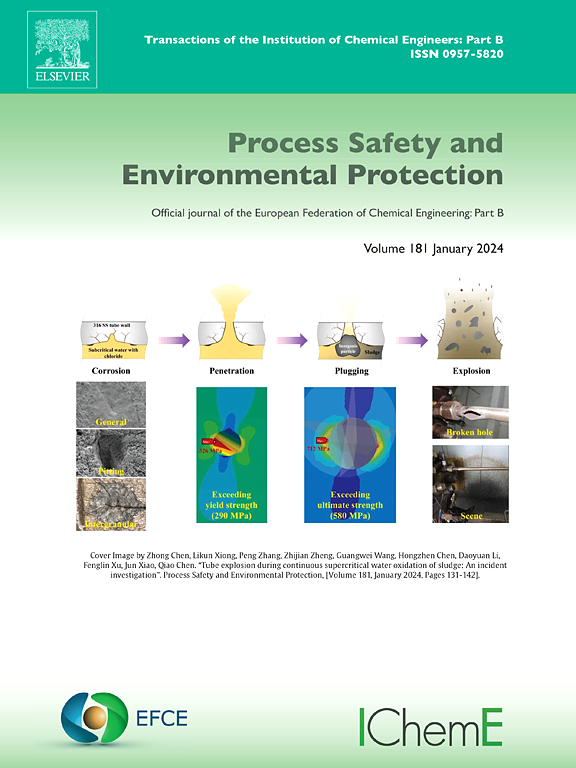Multi-subspace quality-aware slow feature extraction for decentralized process monitoring
IF 6.9
2区 环境科学与生态学
Q1 ENGINEERING, CHEMICAL
引用次数: 0
Abstract
The focus on process safety and product quality has propelled the adoption of sophisticated data-driven methodologies, with multivariate statistical process monitoring (MSPM) becoming a cornerstone in process industries. However, as these industries expand and generate increasingly complex datasets, conventional MSPM frameworks often fail to capture intricate process dynamics, complicating fault detection and diagnosis. Additionally, most MSPM approaches do not consider the moderating influence of closed-loop controllers on abnormal conditions, frequently leading to misclassification of operational transitions as faults. To address these challenges, this paper presents a Multi-Subspace Quality-Aware Slow Feature Analysis (MQASFA) method for concurrently monitoring operational deviations and anomalous behavior. The MQASFA framework employs a multi-subspace strategy using symmetric Kullback-Leibler divergence to aggregate correlated variables from a probabilistic standpoint. A divisive hierarchical clustering algorithm is applied to integrate variable blocks, reducing computational complexity and redundancy while preserving essential local process information. A quality-aware slow feature analysis submodel is subsequently deployed for decentralized, quality-focused monitoring within each subspace. To differentiate routine operational variations from significant anomalies, novel static and dynamic metrics derived from Support Vector Data Description are introduced. The efficacy of the proposed methodology is validated through applications to the Tennessee Eastman process and a wastewater treatment benchmark.
求助全文
约1分钟内获得全文
求助全文
来源期刊

Process Safety and Environmental Protection
环境科学-工程:化工
CiteScore
11.40
自引率
15.40%
发文量
929
审稿时长
8.0 months
期刊介绍:
The Process Safety and Environmental Protection (PSEP) journal is a leading international publication that focuses on the publication of high-quality, original research papers in the field of engineering, specifically those related to the safety of industrial processes and environmental protection. The journal encourages submissions that present new developments in safety and environmental aspects, particularly those that show how research findings can be applied in process engineering design and practice.
PSEP is particularly interested in research that brings fresh perspectives to established engineering principles, identifies unsolved problems, or suggests directions for future research. The journal also values contributions that push the boundaries of traditional engineering and welcomes multidisciplinary papers.
PSEP's articles are abstracted and indexed by a range of databases and services, which helps to ensure that the journal's research is accessible and recognized in the academic and professional communities. These databases include ANTE, Chemical Abstracts, Chemical Hazards in Industry, Current Contents, Elsevier Engineering Information database, Pascal Francis, Web of Science, Scopus, Engineering Information Database EnCompass LIT (Elsevier), and INSPEC. This wide coverage facilitates the dissemination of the journal's content to a global audience interested in process safety and environmental engineering.
 求助内容:
求助内容: 应助结果提醒方式:
应助结果提醒方式:


